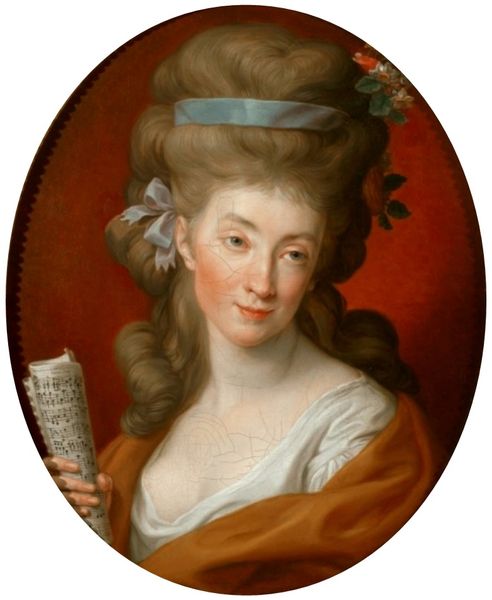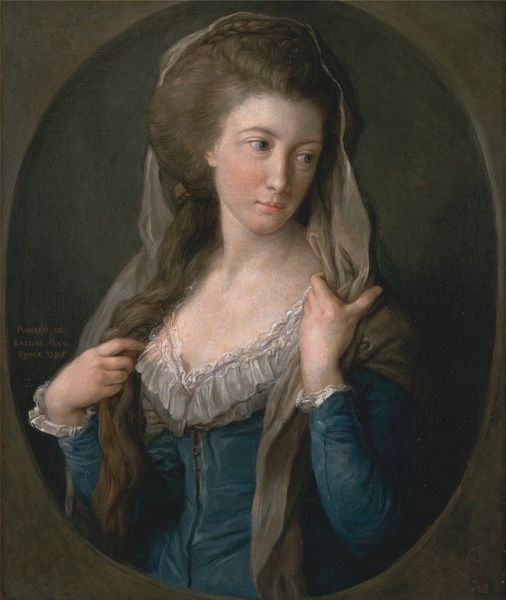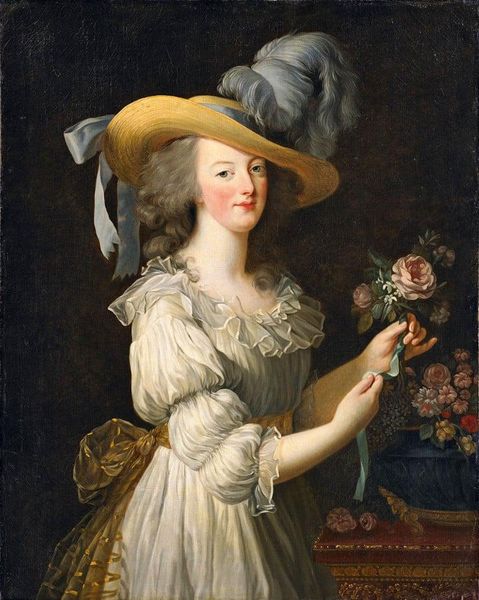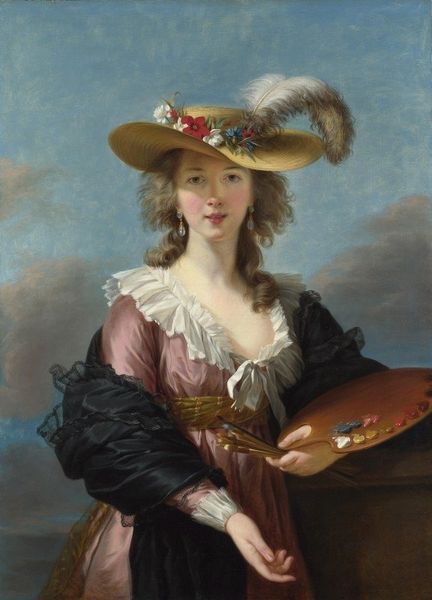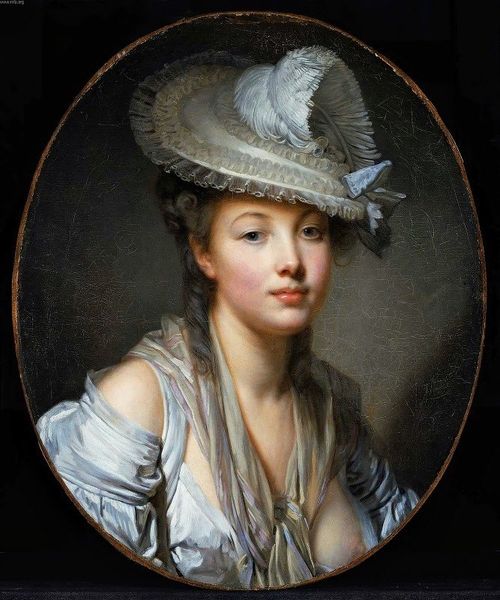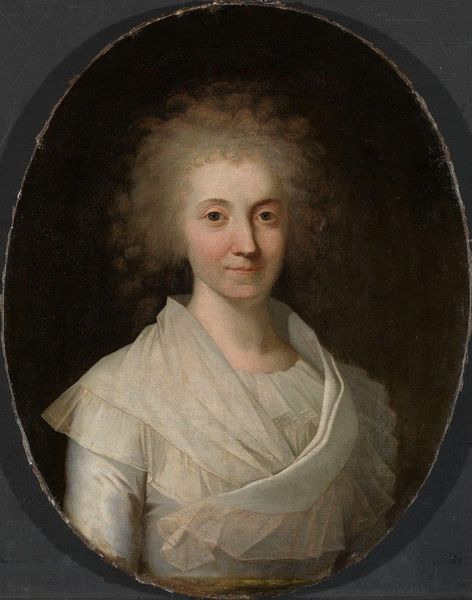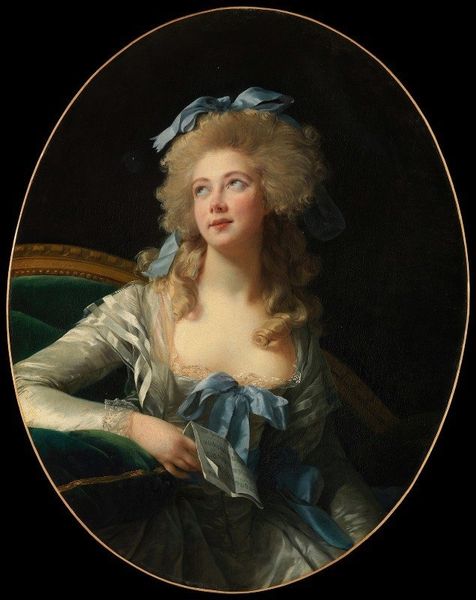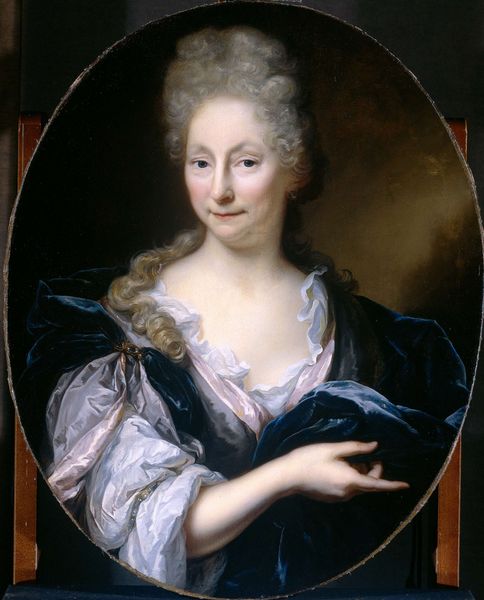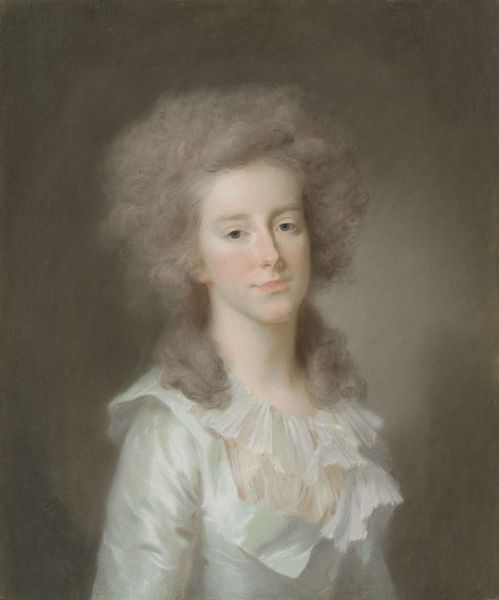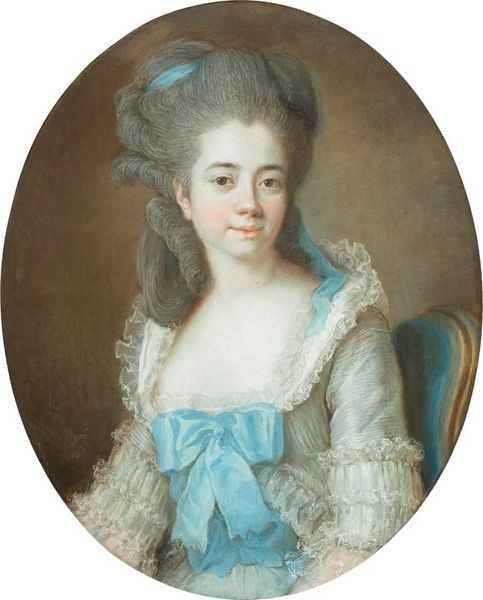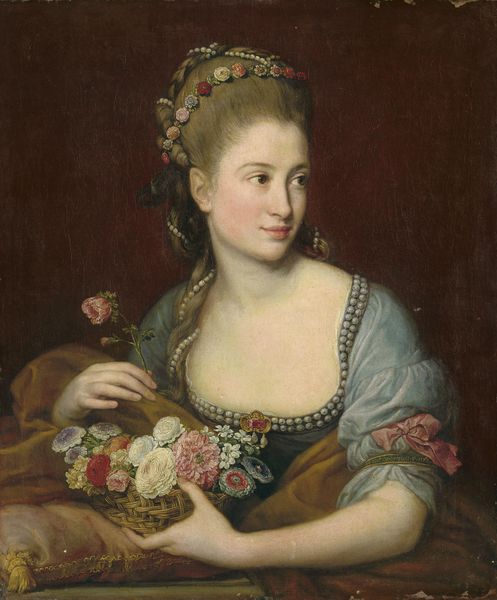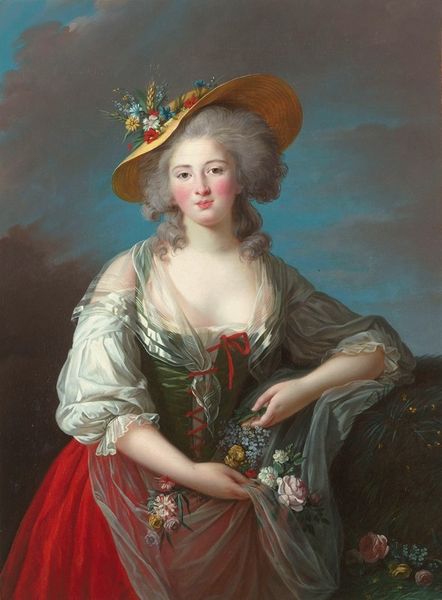
Copyright: Public Domain: Artvee
Curator: Here we have Pompeo Batoni's "Portrait of Izabela née Lubomirska, Wife of Ignacy Potocki," dating to 1780. The piece employs oil paint, exhibiting characteristics typical of the rococo era. Editor: The subdued color palette is the first thing that strikes me. I sense a delicacy and refined artistry in its composition, even before delving deeper. Curator: Indeed. The portrait’s refined texture is achievable through layering, specifically building the forms in thin glazes of oil paint, allowing subtle gradations of tone to describe the curves of her face and dress. Observe the almost porcelain-like finish of the skin, a characteristic trait in Batoni's oeuvre. The very materiality speaks to the aristocratic patronage that he sought. Editor: Beyond the artistry, I consider the implications of its making. Someone mined the pigments, others refined the oil. It would be fascinating to reconstruct that labor chain. Consider how many individuals had a hand in realizing this representation of wealth and status. Curator: Quite right, it embodies a nexus of artistic skill and the fruits of industry. The symbolism is undeniable. Notice the sheet music in her hand—an emblem of accomplishment and cultivated taste. Furthermore, observe how the artist balances elements such as form and function to give us meaning; see how Batoni uses the oval of the frame to center the main subject: the elegant and aristocratic lady. Editor: It all reinforces the construction of femininity at that time—music being considered a suitable pastime for women of her status, indicating both leisure and the consumption of material goods that support that lifestyle. A lifestyle funded by exploiting the work of those unnamed. Curator: Perhaps it’s best to consider Batoni’s genius for capturing the character through line, form and color, the pure essence of character he manages to imprint in the visage of the subject of the artwork. The application of the medium serves that formal purpose. Editor: Yes, but even within these graceful lines, the very texture and the oil itself are remnants of that world's very real material relations. They testify to the invisible hands whose labor made such art possible. Curator: A fascinatingly multifaceted artwork indeed. Thank you for the perspective. Editor: The pleasure was all mine. It’s always worthwhile to consider not only what's on the surface, but the historical processes embedded within.
Comments
No comments
Be the first to comment and join the conversation on the ultimate creative platform.
